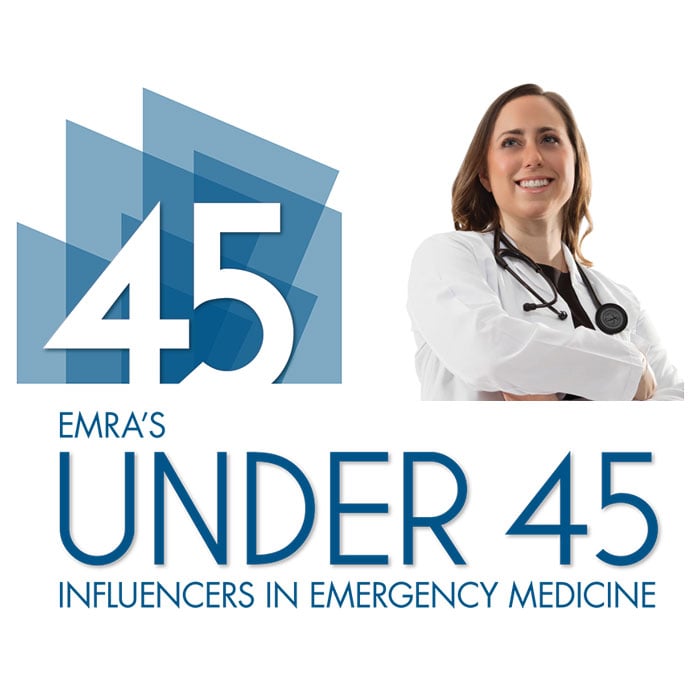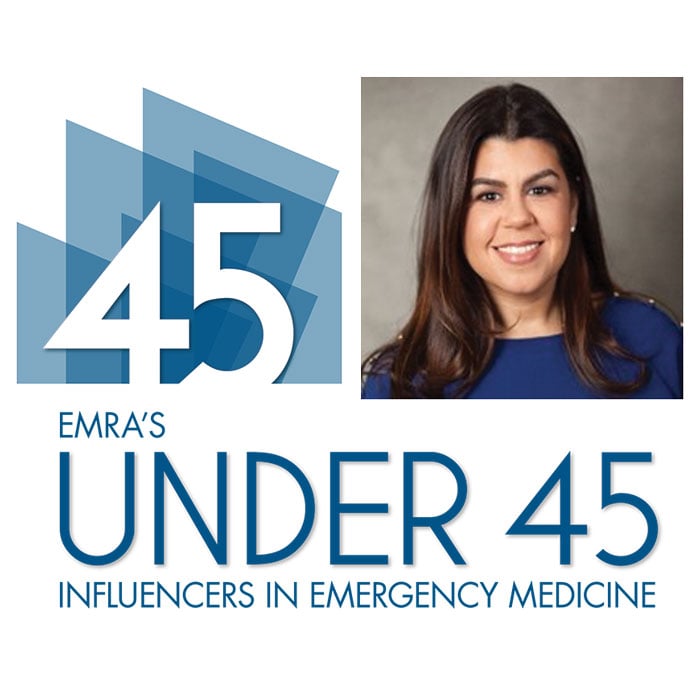COMLEX or COMLESS?
Grace Bunemann, OMS III - Campbell University School of Osteopathic Medicine
EMRA MSC Osteopathic Coordinator, 2021-2023
It takes a lot to get into medical school from pre-requisites to the MCAT exam. All medical students are faced with equal requirements* for admission to both allopathic and osteopathic medical schools. Medical schools also have incredibly similar curriculums and training processes. So why is there not a single licensure examination series?
Historically it’s fair to say there was a significant difference between osteopathic and allopathic training – from their philosophy, education model, and curriculum content. The two have become nearly identical in recent times, each taking on characteristics of the other. Osteopathic schools broadened their curriculum, while allopathic schools have adopted a more holistic approach to patient care. An area where osteopathic medical schools have heavily mimicked allopathic schools is their licensure examination series. On his blog Dr. Brian Carmody discusses the ways in which the NBOME has emulated the NBME; most recently with the indefinite suspension of COMLEX Level 2 CE after the NBME canceled Step 2 CS (Carmody, 2021). While the NBOME has evolved to become and remain relevant for the last 85 years, it is now becoming obsolete especially in the eyes of the most important stakeholders in osteopathic education & training — the current students and residents. NBOME is well aware of their unpopularity amongst DO students and yet they continue to push students further away through their decisions and comments (DO Medical Students and Residents et al., 2021).
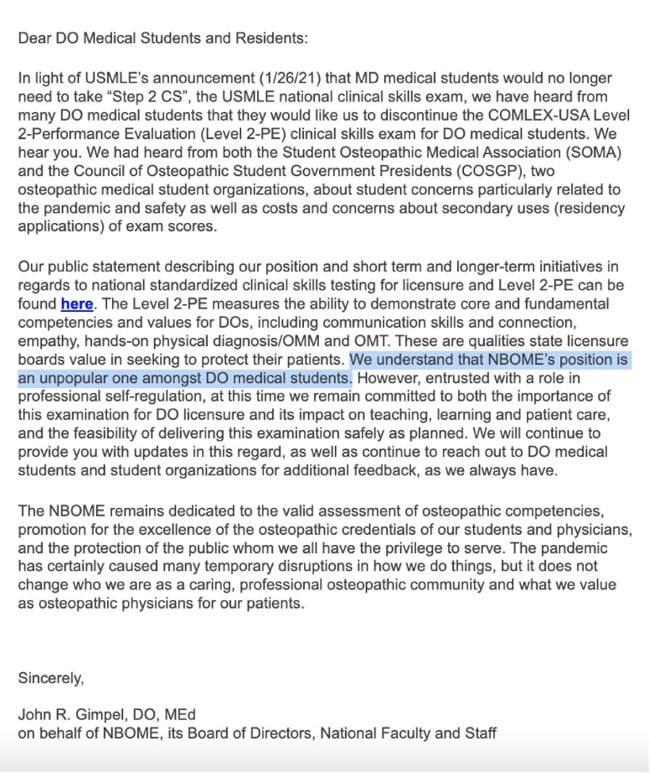
Osteopathic education is distinct and should remain as such however it must be balanced with the cost to students – financially, vocationally, and mentally. As the system stands the cost is very high for osteopathic students in every way. The persistence in requiring COMLEX examinations for accreditation and licensure places an undue burden on the osteopathic medical student.
Financially: Year after year, medical students are facing increasing costs of attendance, board examinations, etc. For osteopathic medical students, the costs are even steeper. DO students face significantly greater medical education debts than our MD peers – a mean of $54,000 and a median of $74,000 (AACOM, 2021; AAMC, 2021). We also see that more DO students are burdened with medical education debt then MD students. 91% of osteopathic students acquire medical education debt conversely only 73% of allopathic students acquire medical education debt (AACOM, 2021; AAMC, 2021). As of February 2022, the total cost of the COMLEX series is $2,240 and the total cost of the USMLE series is $2,185. These costs do not include preparation materials, rescheduling fees, etc., and are not included in tuition, leaving students to cover the costs on their own.
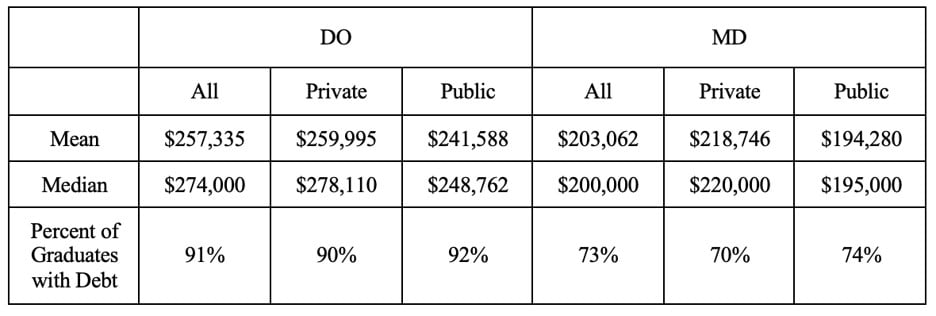
Table 1: Data retrieved and compiled from 2020-2021 AACOM Graduating Senior Survey Summary Report and AAMC Medical School Graduation Questionnaire 2021 All Schools Summary Report (AACOM, 2021; AAMC, 2021)
Vocationally: While improving, osteopathic students still face discrimination within the graduate medical education, specialty choice, and job market. In its 2021 Graduating Senior Survey Summary Report, AACOM notes that 71% of survey participants endorse the statement that the ABMS (allopathic) board certification is more widely recognized, 59% of survey respondents indicate ABMS board certification provides more opportunities, and 51% agree ABMS board certification has more colleague acceptance (AACOM, 2021). The advice presented to DO students about the effect of taking one (COMLEX alone) or both exams is different wherever you look. No student wishes to accidentally close themselves off from opportunities which leads to many osteopathic students ultimately choosing to sit for both examination series. Currently, there are only six states (CA, OK, MI, PA, and FL) that require DOs to pursue licensure with the COMLEX series of examinations (American Osteopathic Association, 2020). The other 44 states allow for DOs to obtain licensure via either licensure series (American Osteopathic Association, 2020). These examinations are equal and it is past time that the few remaining states update their laws to reflect that.
Mentally: It is well-known and recognized that the pressure students face in taking these examinations is incredibly high – DO students who choose to take both exams are subject to an even greater burden. Most students will agree the preparation for these exams is taxing in every single way and it’s destructive to their health and wellness (Tackett et al., 2022). We need to reevaluate the performance pressure of these exams as the system is burning out future physicians before they even graduate from medical school.
So what is the purpose of COMLEX exams? The NBOME frequently references patient safety as the primary goal of maintaining the COMLEX series of examinations (DO Medical Students and Residents et al., 2021). A separate examination series for osteopathic students does not meet this aim and may even jeopardize patient safety due to the burden placed upon DO students. If the goal is patient safety, the training of OMM/OMT should be standardized further across DO schools. In discussions with osteopathic students across the country, there is a wide variety in OMM/OMT training. Students are taught different techniques, different terminology, and their skills are evaluated at varying intervals across institutions. It’s time to eliminate the double standards that DOs face starting with a single licensure examination series for all.
*While individual schools may have slightly different entrance requirements there is a general standard across all US medical schools.
References:
- AACOM. (2021, October). 2020-2021 AACOM Graduating Senior Survey Summary Report. AACOM Reports: Entering and Graduating Class Surveys. Retrieved February 18, 2022, from https://www.aacom.org/docs/default-source/data-and-trends/aacom-2020-2021-graduating-seniors-survey-summary-report.pdf?sfvrsn=628f0597_4
- AAMC. (2021, July). AAMC Medical School Graduation Questionnaire 2021 All Schools Summary Report. AAMC Medical School Graduation Questionnaire (GQ). Retrieved February 18, 2022, from https://www.aamc.org/media/55736/download
- American Osteopathic Association. (2020, May). U.S. OSTEOPATHIC LICENSURE SUMMARY. Chicago; American Osteopathic Association. https://web.archive.org/web/20201101015506/https://osteopathic.org/wp-content/uploads/2018/03/US-licensure-Summary-MAY-2020.pdf
- Carmody, B. (2021, January 27). The NBOME, part 2: Osteopathic medicine's vestigial organ. The Sheriff of Sodium. Retrieved February 18, 2022, from https://thesheriffofsodium.com/2020/10/24/the-nbome-part-2-the-origin-of-an-anachronism/
- Gimpel, J., & NBOME, its Board of Directors, National Faculty and Staff. (2021, January 28). NBOME Letter to DO Medical Students and Residents.
- Tackett, S., Jeyaraju, M., Moore, J., Hudder, A., Yingling, S., Park, Y. S., & Grichanik, M. (2022). Student well-being during dedicated preparation for USMLE Step 1 and Comlex Level 1 exams. BMC Medical Education, 22(1). https://doi.org/10.1186/s12909-021-03055-2
Related Content
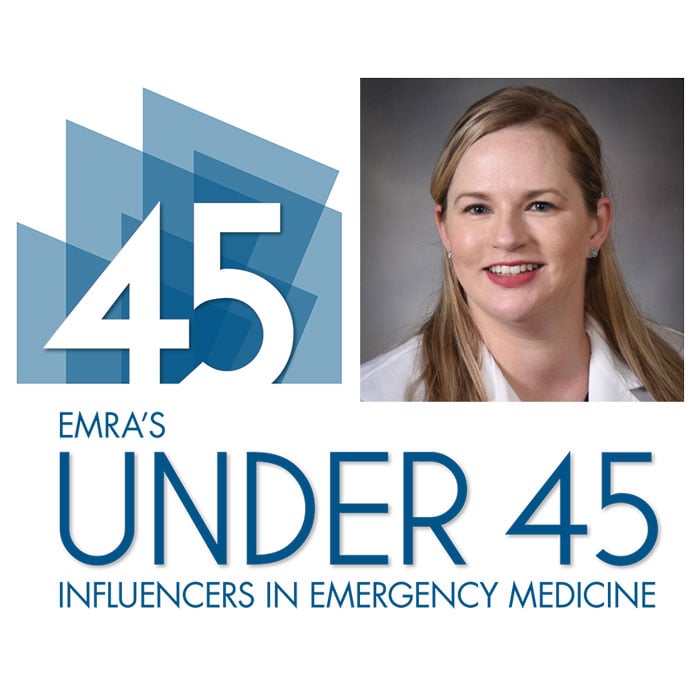
Aug 31, 2019
Nicole Battaglioli, MD, FAWM
As outgoing ALiEM Wellness Think Tank COO, Nicole Battaglioli has devoted considerable time and brainpower to defining and improving resident wellness. Along with being an Assistant Professor of Emergency Medicine, Dr. Battaglioli is the CEO/founder of Komorebi Coaching, lover of wilderness medicine, and promoter of super-sheroes.
